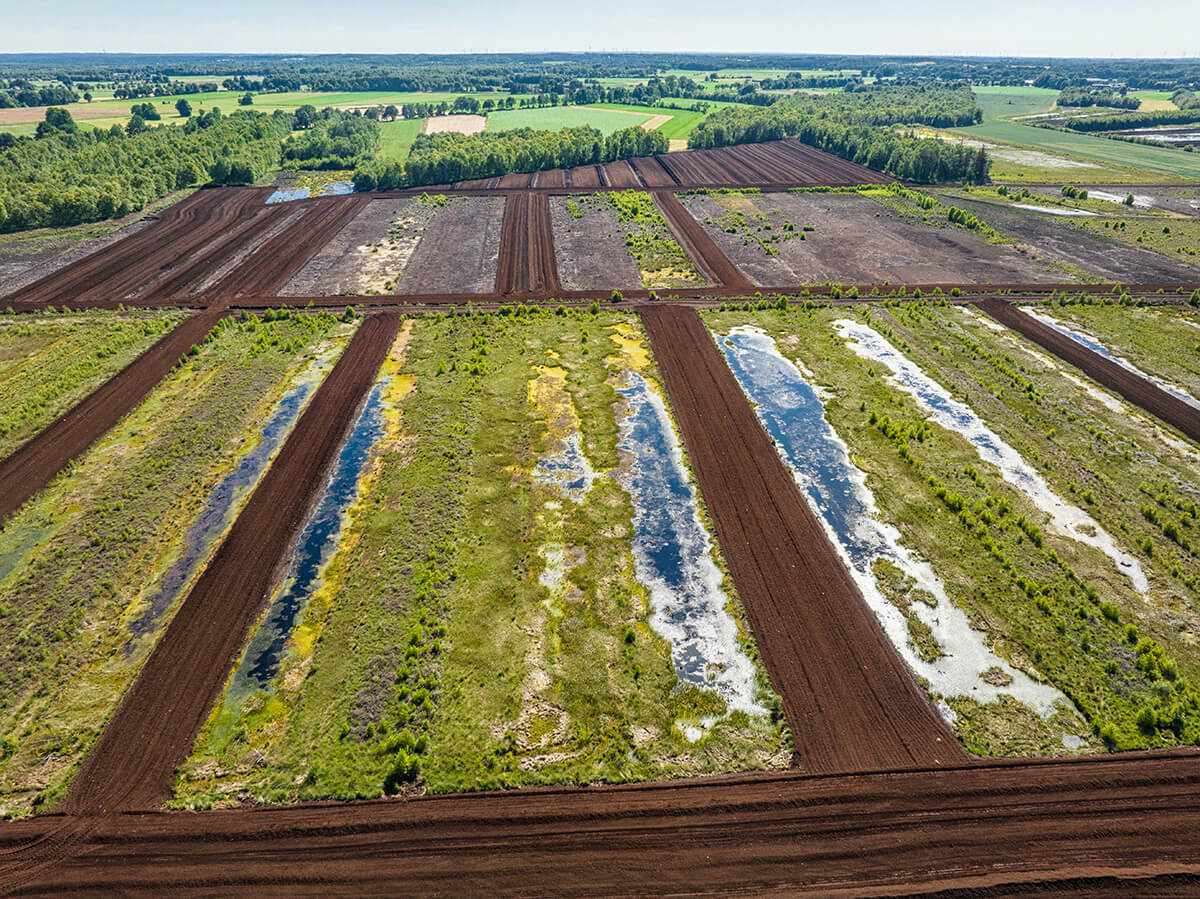We do peat extraction and peatland restoration parallel
At Gramoflor, peat extraction is carried out using the so-called “upper-subfield process”, a method that has been specially developed over decades and in which peatland renaturation already begins during peat extraction. They therefore run in parallel and the first measures for establishing a living raised bog are already initiated during peat extraction.
This gives nature an important head start and the conditions for successful peatland renaturation are optimised. Within a few years, the application of the upper-subfield process once again creates contiguous peat moss carpets as a foundation for the return of a unique peatland-typical flora and fauna.
Good to know: Where does peat extraction take place today?
Basically, one has to know that the peatlands relevant for peat extraction have been in predominantly agricultural use for many decades and that there is definitely nothing left of the original raised bog vegetation here. These are therefore not intact moors at all, but maize or grain fields, pastures for dairy farming or even forests. In this state, these areas have completely lost their valuable functions as highly effective water reservoirs and important carbon stores. The soil is currently nothing more than a peat body or a so-called “peat deposit” and already emits large amounts of CO2 year after year.
Even if the areas in this state were to be flooded, i.e. flooded with water again, no moor would develop here again, but at worst a so-called “methane and nitrous oxide desert” for decades.
For a successful development of raised bogs after agricultural use, it is absolutely necessary to remove a topsoil layer of 30-50 cm in advance, because in this area the germination and nutrient pressure as well as the pH value are much too high due to years of working the soil. They stand in the way of the development of vegetation typical of raised bogs, which, unlike many other plant species, can only develop well under nutrient-poor and acidic conditions.
In addition, it is regulated by law that on average a residual peat body of 0.5 m must remain in the soil after peat extraction. This is then the basis for successful raised bog development after peat extraction.

